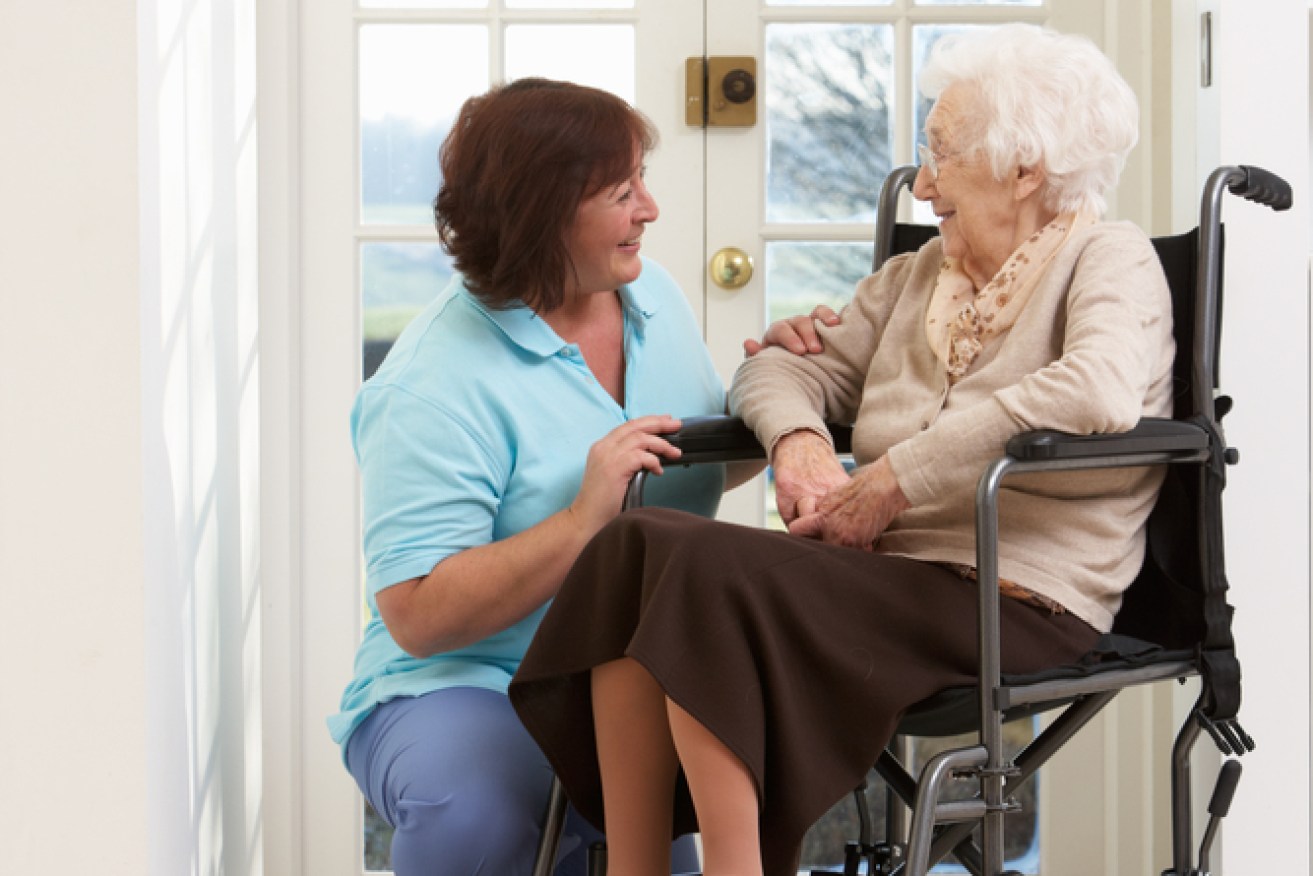Expensive and confusing: aged care explained


Shutterstock
Aged care is an unavoidable reality for many of us. And the bad news is, it isn’t getting cheaper. Or simpler.
The population is ageing at an alarming rate. According to the Department of Social Services, more than one million people already access aged care services, and this figure will only increase in coming years.
• Rate cuts hurt retirees, Abbott admits
• Moving to a retirement village? Read this
• Avoid the bread line: make your super last
This tsunami of ageing Australians is pushing up aged-care costs. Costs are expected to double to $26 billion a year in less than a decade, as the number of Australians aged 65 and over triples by 2050.
It is little surprise then that experts are urging older Australians to put a few plans in place so they don’t get a complete shock when it comes time to finance aged care.

If you don’t prepare, you may not get the best care. Photo: Shutterstock
Get used to high prices
In order to deal with this tsunami, the government is looking for ways to palm off responsibility for aged care to individuals. With this in mind it introduced a series of changes to the sector in July last year, on the back of the 2011 Productivity Commission report, Caring For Older Australians.
The reforms allowed for bonds to be levied on all aged care residents at a “market price” and introduced assets to the means test for fees.
“Aged care has become more expensive because of the changes,” says Combined Pensioners and Superannuants Association of NSW Senior Advisor, Charmaine Crowe.
“This is very much a business geared to making profits.”
If you are perturbed by the thought of forking out so much money for bonds and fees in your later years, the message from the experts is: get used to it.
“The Government is increasingly taking the line that you cannot expect taxpayers to contribute to others’ retirement,” adds the chief executive of Aged and Community Services Australia, John Kelly.
“Consumers are going to have to pay more. I mean every week 1000 more people turn 80. We can’t ignore it.”
State of play
There are three tiers of fees that apply to residential care: a basic daily care fee, about $47.15, that everyone pays; an accommodation fee, which people must pay if they have $155,000 or more in assets; and a means tested cost-of-care fee for medical expenses, which is capped at $25,000 a year, and stops once a person has paid $60,000.
The salient point is that once you hit $155,000 in assets (this can be a house or a stamp collection) you need to pay 100 per cent of your accommodation fee — it does not matter if you have $2 million in assets or $155,000, you must pay whatever the flat market price the nursing home sets once you reach the $155,000 threshold.
You can choose to pay for the accommodation fee in the form of an invested bond that is yielding interest for the nursing home — the average accommodation fee is $350,000 in the metropolitan areas — and the lump sum is returned to the estate once the person dies.
Or you could pay a flat fee in rent each month to cover accommodation.
It all depends on the size of your super or retirement savings as to which is the better path to take.
“If you have a large lump sum you may be better off holding that money and getting the returns on the investment yourself rather than giving it to the nursing home,” says Ms Crowe.

Think twice before selling your home to pay for aged care.
“You may find it is cheaper in the long run to pay the accommodation cost in a weekly rent. Or pay half through a bond and half in rent. These are things that people should sit down with an independent financial adviser to discuss first.”
Think before selling up
If you have hundreds of thousands tied up in assets, you may be tempted to sell the family home to produce the bond, but principal of Aged Care Gurus and author of Aged Care, Who Cares?, Rachel Lane, suggests people think twice about this approach.
“If you rent out your house – if there is someone in it – it is not included in the means test for your cost-of-care fee,” Ms Lane points out.
“You can use the rent money to pay your accommodation costs and then you still have an asset that is appreciating in value.
“But if you sell the house and you get quite a high sum for it, it is included in determining how high your cost-of-care fee will be.”
The good news is that pensioners with assets worth less than $45,000 are fully subsidised by the Government, although it is worth noting that 85 per cent of their pension is funnelled to their nursing home to cover the basic daily care fee of $47.15.
“Furthermore, we have some concerns that pensioners do not get as much say in what nursing home they go into and may not get the best level of care,” says Ms Crowe.








